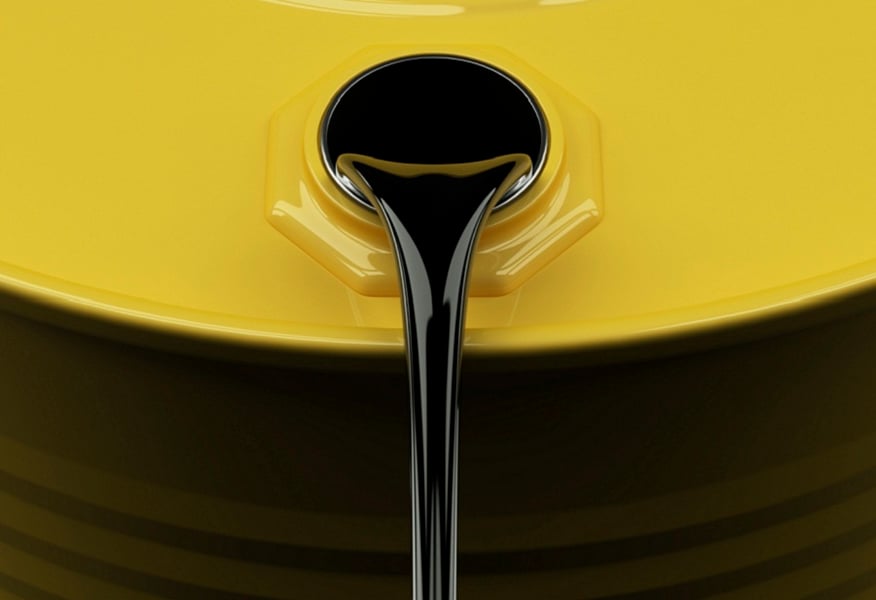Even as the price of oil falls to an 11-year low, market watchers advise against trying to time the bottom, and instead encourage either buckling in for the long-term or avoiding the commodity altogether.
“If you're trying to trade in the commodity space right now, you're taking on too much risk; but if you're investing and you've got a longer time horizon, you're being paid to wait,” said Quincy Krosby, market strategist at Prudential Financial.
The price of oil, now trading below $35 a barrel, has defied analysts' expectations for more than a year, and now there is speculation that the price of the commodity could fall below $30 before it starts to rebound.
“As an investor, you have to be awfully careful and awfully nimble, because there's so much uncertainty about where oil could find a bottom,” Ms. Krosby said. “Some managers are suggesting now is the time to bottom fish in oil-related sectors, but you have to remember that oil can still get cheaper.”
She cited master limited partnerships, which represent infrastructure projects that transport commodities, as
one area where investors could get tripped up by not paying attention to balance-sheet details.
The category of MLP mutual funds, as tracked by Morningstar, is down 41% over the past 12 months. The S&P 500 Index is down 0.64% over the same period.
“Amidst the carnage in the MLP space, you're already seeing some bottom fishing, but the trouble is there's no way of knowing where the bottom is,” Ms. Krosby said. “Very often, in any sector, it can go well below where it should go. Usually, when everybody is against it, that's when you're going to find a bottom.”
As a global commodity, stubbornly
cheap oil is viewed as a sign of a weakening global economy, which has ripple effects across all financial markets.
But even as falling oil prices are creating investment challenges, the broader macroeconomic fears are unwarranted, according to David Bahnsen, chief investment officer of Bahnsen Group at Hightower.
“Right now, oil prices are still a function of excess supply, but demand continues to increase,” he said. “The economics of low oil prices that are killing the OPEC countries will dictate that the supply of oil does what supply-and-demand fundamentals always do.”
Mr. Bahnsen expects to see a reduction in oil supply over the next several months, gradually driving the price up to around $40 during the first quarter of 2016, and as high as $50 by early fall.
“If the price of oil is going to level off, and then see some increase later in the year, the higher-quality producers look attractive at this price level,” he said, citing EOG Resources (EOG) among his favorites.
EOG shares are down 22% over the past 12 months, which compares to a 36% decline for the overall exploration-and-production category.
Mr. Bahnsen also likes the MLP space at current price levels, but like Ms. Krosby, advises careful due diligence to ensure there's enough cash flow.
“Pick a few MLPs that are not in danger of cutting their dividends and have lots of natural-gas business,” he said. “The last three times oil prices dropped, MLPs dropped with it and it felt like the end of the world. Then MLPs led on the way up. But they have to be the higher-quality names, because lower-quality names will get pummeled.”
Bentek Energy, a sister company to S&P Capital IQ, is forecasting $46 oil in 2016, heading toward $52 a barrel in 2017, which is better but not great, according to S&P Capital IQ equity analyst Stewart Glickman.
“I think the absolute price level matters more than the percentage gain, because $46 oil is not high enough to make uneconomic plays suddenly economic again,” he said.
In the closely watched exploration-and-production space, capital expenditures have fallen by 32% this year and are expected to fall by another 17% next year.
“They're doing the best they can, but even as capex gets trimmed, cash from operations gets worse, so it's like they're trying to hit a moving target,” Mr. Glickman said. “This is an industry that tends to run cash-flow negative anyway, so it just makes a bad situation worse.”
He, too, advises
caution for anybody considering a move toward taking advantage of the slumping commodity complex.
“If you want to play energy, you need to think about a longer-term perspective and not try to time the bottom,” he said. “You could argue that the current price of oil is an overreaction, but there's still no reason the price can't go lower.”







